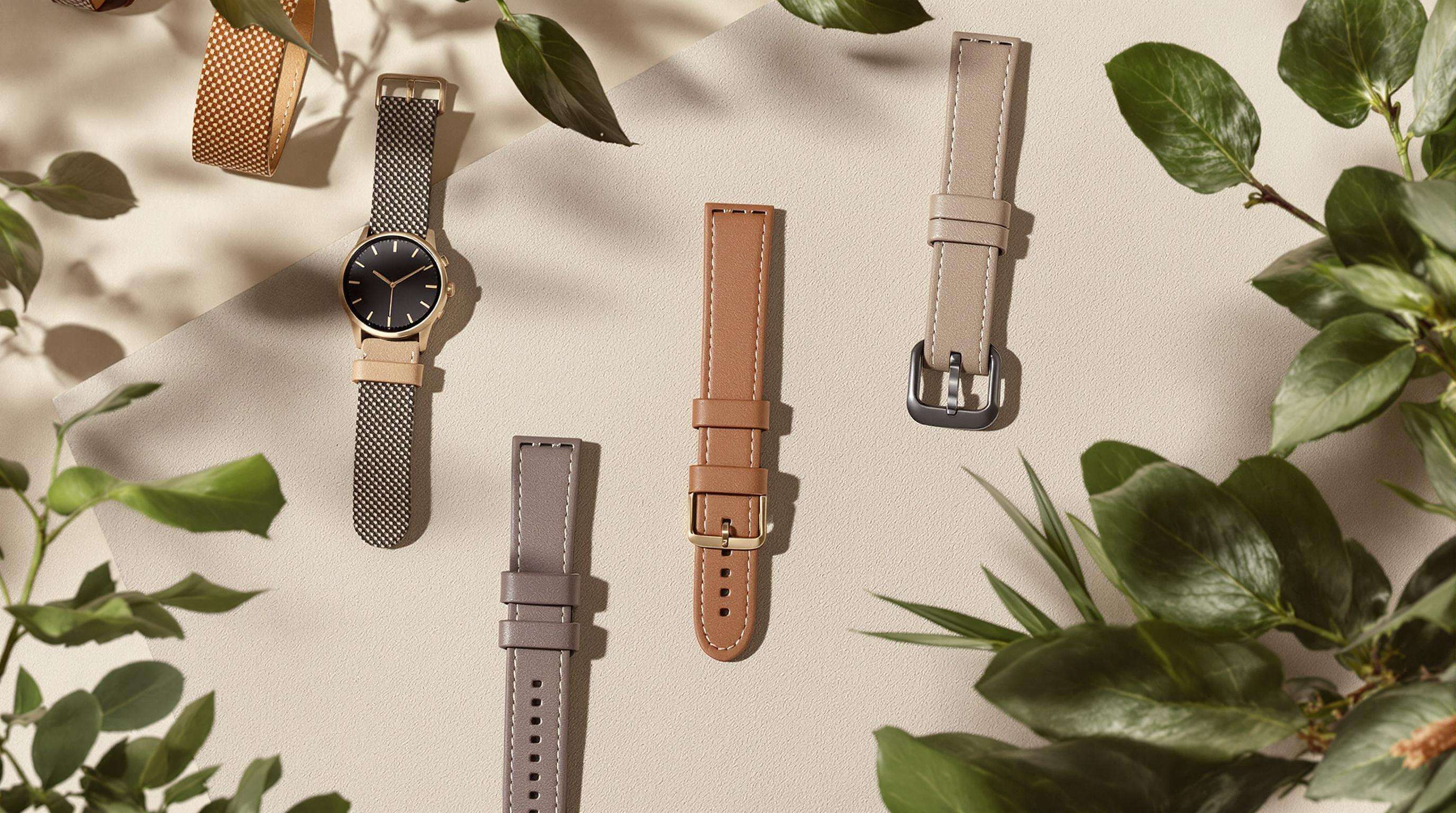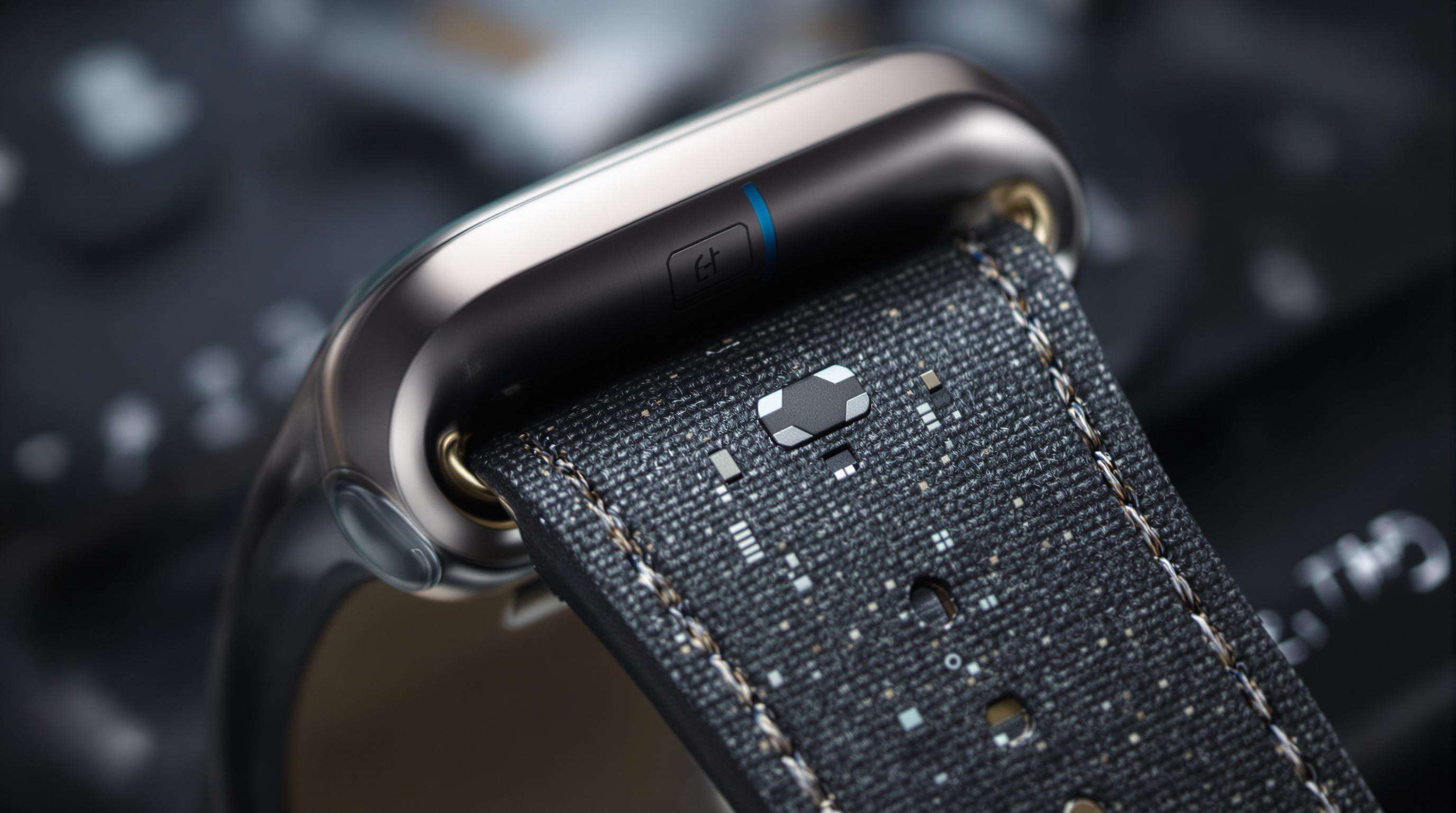With the increasing demand for smart wearables, what will be the future of artificial leather in this field?
Material Innovation: Why Artificial Leather is Gaining Traction in Smart Wearables
Rapid advancements in material engineering position artificial leather as a catalyst for smart wearables innovation. This section examines its technical superiority and ecosystem impact.
How artificial leather supports the growth of smart wearables
Wearable technology is becoming more popular thanks to artificial leather that combines green benefits with tech features. The material weighs about 47 percent less than regular leather according to some research from the Journal of Leather Science back in 2023, which means people can wear devices longer without feeling weighed down. What makes this material special is how it lets manufacturers embed sensors right into the fabric for things like heart rate monitoring. Tests have actually shown better sweat management and more accurate readings when compared to other materials. For companies making small electronic gadgets, these characteristics solve real problems with fitting all the components inside compact designs. Plus, as more people care about environmental impact, this kind of leather gives manufacturers an edge in selling products like fitness bands and health monitors.
Comparative advantages over traditional leather and synthetic materials
Engineered leather alternatives dominate through performance-focused differentiation:
| Property | Traditional Leather | Standard Synthetics | Advanced Artificial Leather |
|---|---|---|---|
| Flexibility | Limited stretch | High rigidity | Tunable elasticity |
| Sweat resistance | Degrades over time | Surface erosion | Hydrophobic molecular design |
| Production carbon footprint | 8.7 kg CO₂/m² | 6.2 kg CO₂/m² | 3.1 kg CO₂/m² |
| Conductivity compatibility | None | Signal interference | Nano-engineered pathways |
This balance enables thinner form factors with superior adhesion for micro-electronics—essential for unobtrusive health wearables requiring direct skin contact.
Role of material science in enhancing flexibility, weight, and sensor compatibility
The world of synthetic leather is getting a major upgrade thanks to nanostructured polymers. Engineers have managed to create cross-linked polyurethane matrices that are just 0.2mm thick yet still hold up against punctures, which makes them ideal for those super light smartwatch bands we all love. When manufacturers start adding graphene to their coatings, something interesting happens - these materials actually form paths that block interference for electrophysiological sensors. The result? Signals stay strong at around 99% accuracy even when someone is moving around a lot. And let's not forget about comfort factors either. New gas permeable mesh laminates breathe three times better than older synthetic materials, so people who wear devices all day don't end up with irritated skin from constant contact. All these advances mean what was once stiff wearable tech now feels more like a natural extension of our bodies rather than just another gadget on our wrists.
Sustainability Meets Performance: The Rise of Bio-Fabricated and Plant-Based Leather

Environmental benefits of bio-fabricated leather in wearable tech
Leather made through bio fabrication cuts down on environmental harm quite a bit actually. According to the 2025 Sustainable Materials Report, it uses around 80 percent less water compared to regular leather production and creates about 65 percent fewer carbon dioxide emissions too. What makes this material so special is its plant based nature which means it breaks down completely over time without leaving any harmful residues behind. Plus there's no need for animal farming involved at all. When we look at smart wearable technology, companies are finding ways to integrate these new leathers without feeling guilty about their choices. Brands have started experimenting with options like mushroom leather and apple leather that still manage to look really high end despite being eco friendly alternatives. The fashion industry has already begun adopting these materials across various product lines, proving they can satisfy both environmental concerns while keeping consumers happy with their appearance and functionality.
Lifecycle analysis: Reducing carbon footprint without sacrificing durability
Modern lifecycle assessments show plant-based alternatives cut supply-chain emissions by 40—60% compared to petroleum-based synthetics—without compromising wear resistance. Accelerated aging tests reveal bio-fabricated materials maintain tensile strength over 50% longer than conventional synthetics.
| Material Type | Water Consumption (L/kg) | Avg. Carbon Footprint (kg CO₂e) | Product Lifespan |
|---|---|---|---|
| Traditional Leather | 16,600 | 110 | 3—5 years |
| Bio-Fabricated | 3,200 | 45 | 4—7 years |
Balancing eco-conscious materials with technical demands of smart wearables
The breakthrough lies in engineering natural structures with embedded sensor-friendly conductivity. Enzymatic nano-coatings create moisture-wicking surfaces that prevent signal interference. Trials show heart-rate monitor accuracy improves by 30% when embedded in cactus-based leather versus silicone composites—proving sustainable materials can outperform conventional synthetics in precision-critical applications.
Durability, Comfort, and Skin Compatibility in Long-Term Wear
Breathability and Hypoallergenic Properties of Advanced Artificial Leather
New artificial leathers now come with tiny holes and special wicking layers that let air through better, which means less itching when worn all day long. The stuff they're making these from doesn't trigger allergies much either, so people won't get those red rashes that happen with regular synthetic materials. This matters a lot for gadgets that stick to the body nonstop like heart rate monitors or glucose sensors. According to research published last year by some design experts, how well these materials work against skin problems depends mostly on how breathable they are plus getting proper certifications. Their tests showed around 40 percent fewer complaints about irritation than older plastic-like alternatives.
Performance Under Continuous Use: Resistance to Sweat, Friction, and Sensor Pressure
Synthetic leather holds up pretty well against sweat and constant rubbing thanks to special water repelling coatings that stop it from breaking down over time. Lab tests indicate around 90% of original strength remains even after hundreds of hours in simulated real world conditions, which makes it better than regular animal hide when moisture is involved. What really matters for wearable tech applications though is how these materials keep good contact with built in sensors. The consistent pressure helps avoid those annoying signal fluctuations and keeps readings accurate whether someone is working out at the gym or monitoring health metrics throughout the day.
Technology Integration: Embedding Sensors and Smart Features into Artificial Leather

Innovative coatings and treatments for seamless tech integration
When it comes to making artificial leather work with smart wearable tech, specialized treatments are what makes it possible. These treatments include nano-coatings that actually form those conductive paths needed for touch sensitivity, plus there are these hydrophobic layers that keep sweat away from sensitive electronic components. Some manufacturers have started using graphene-infused laminates which do double duty - they allow for wireless charging while also transmitting bio-signals at the same time. According to recent industry studies, when sensors are compatible with these special coatings, devices respond better than regular synthetic materials by around 40%. And this matters because nobody wants their fancy tech accessory looking terrible after just a few uses. The aesthetics remain intact despite all the high tech stuff going on underneath, which is absolutely crucial for products trying to merge style with functionality in today's market.
Embedding biometric sensors for real-time health monitoring
New weaving methods now allow tiny sensors to be woven right into synthetic leather materials for ongoing health monitoring. These special sensors that won't irritate the skin track things like how the heart beats differently over time and what the skin's temperature is, all thanks to super small conductive threads made from nanoparticles. Research on combining different materials shows these sensor systems keep working properly even when someone moves around, and they don't cause discomfort either. The flexible circuitry bends with the body's shape, so people can get the same kind of detailed monitoring found in hospitals but just wear it as part of regular clothing or accessories. This technology is really pushing forward both medical devices and fitness trackers because it makes high quality monitoring accessible outside clinical settings.
Challenges in signal accuracy and material-layer interference
When different materials layer together in wearable tech, getting them all to work as one is quite tricky. We've seen issues where signals start drifting because those conductive layers pull apart when someone moves around, which messes up readings somewhere between 15% and maybe even 30%. And let's not forget about sweat - our body chemistry changes throughout the day, messing with how electrodes function properly. Some smart folks in labs right now are experimenting with something called atomic layer deposition to make super thin protective coatings against moisture. What's interesting is how teams from completely different fields are coming together here. Material scientists working alongside electrical engineers seem to be finding ways to keep measurements accurate while still making these devices flexible enough that people actually want to wear them for extended periods.
Market Outlook: Consumer Trends and Future Adoption in Smart Wearables
The smart wearable market is expected to hit over $300 billion by 2029 according to Research and Markets data from 2025. Artificial leather has become popular stuff for watchbands and fitness trackers too, making up about 63% of what people buy these days. Why? Well folks want something lighter than regular leather that won't irritate their skin either. And when looking at numbers, around 78% of customers actually care most about how long things last and whether they feel comfortable wearing them all day long.
Growing Demand for Artificial Leather in Smartwatches and Fitness Trackers
Manufacturers are replacing silicone and rigid plastics with advanced artificial leather to enhance skin compatibility and aesthetic appeal. The material's ability to integrate with heart-rate sensors and sweat-resistant coatings has driven adoption in health-focused devices.
Consumer Preferences Driving Material Innovation
A 2025 survey revealed 54% of users now associate artificial leather with premium wearables, up from 32% in 2020. Brands are responding with bio-fabricated variants that reduce production emissions by 41% while maintaining signal accuracy for embedded sensors.
Forecast: The Role of Artificial Leather in the Wearable Market by 2030
By 2030, artificial leather is expected to dominate 68% of wearable tech casings, driven by its adaptability to 5G-compatible designs and wireless charging systems. Analysts project a 22% annual growth rate for sensor-integrated artificial leather, positioning it as the backbone of next-gen health monitoring wearables.
Frequently Asked Questions (FAQ)
What is artificial leather, and how is it different from traditional leather?
Artificial leather, also known as synthetic or engineered leather, is a man-made material designed to replicate the texture and feel of natural leather. Unlike traditional leather, artificial leather often features tunable elasticity, better sweat resistance, and a lower carbon footprint.
Why is artificial leather used in smart wearables?
Artificial leather is used in smart wearables due to its lightweight nature, which enhances user comfort for prolonged wear. It also allows for sensor integration without compromising signal accuracy, offering better sweat management and supporting compact design requirements.
What are the environmental benefits of using bio-fabricated leather?
Bio-fabricated leather consumes significantly less water and produces fewer carbon emissions compared to traditional leather. It is plant-based and biodegradable, reducing environmental harm and eliminating the need for animal farming.
How does artificial leather improve the comfort and durability of wearable devices?
Artificial leather offers enhanced breathability and hypoallergenic properties, reducing skin irritation. Its resistance to sweat and friction ensures durability under continuous use, maintaining consistent pressure for sensor accuracy.
What future trends are expected for artificial leather in the wearable market?
Artificial leather is projected to dominate over 68% of wearable tech casings by 2030 due to its adaptability with 5G designs and wireless charging systems. It is expected to support a 22% annual growth rate in sensor-integrated wearables, driving next-gen health monitoring technology.

 EN
EN







